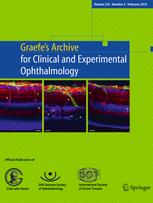Il professor M. Ayala, dello Skovde Hospital, Svezia, ha pubblicato numerosi lavori sul trattamento del glaucoma con SLT (trabeculoplastica laser selettiva).
In questo studio ha verificato l’efficacia del laser anche nel ri-trattamento di occhi in cui il primo trattamento aveva smesso di funzionare.
Egli ha provato a ri-trattare secondo due modalità; nel gruppo 1 di pazienti ha utilizzato aree vergini del trabecolato, cioè non precedentemente utilizzate per SLT; nel gruppo 2 ha ri-trattato le stesse aree già utilizzate. I risultati sono stati di efficacia in entrambi i gruppi, senza differenze tra loro.
In questo modo si conferma ciò che la pratica clinica aveva già mostrato da tempo: il trattamento con SLT è sicuro, non comporta danno alle strutture trattate (tanto che è possibile sottoporle con successo a nuovo trattamento) e risulta efficace anche nelle applicazioni successive alla prima.

Intraocular pressure reduction after initial failure of selective laser trabeculoplasty (SLT)
Marcelo Ayala
Graefe’s Archive for Clinical and Experimental Ophthalmology
February 2014, Volume 252, Issue 2, pp 315-320
Purpose The aim of this work was to study the reduction in intraocular pressure (IOP) after two selective laser trabeculoplasty (SLT) treatments in the same area of the trabecular meshwork (TM) compared to two SLT treatments in two different areas of the TM when the initial SLT treatment has failed.
Methods This was a prospective randomized clinical trial for testing the effect of repeated SLT treatments in reducing IOP. The patients in the study all suffered from primary open-angle or pseudoexfoliation glaucoma. All patients were treated initially with SLT (SLT 1) over 180° in the lower half of the TM. Patients who were chosen for retreatment with SLT (SLT 2) were asked to participate in the study. The patients in the study were randomized to either SLT 2 in the same, already-treated TM area or to SLT 2 in the upper untreated TM area. The IOP was measured before and 2 h, 1 month, 3 months, and 6 months after the SLT 2 treatment. Patients who changed medical therapy regimens during this time were excluded.
Results A total of 40 patients were included in both groups. At baseline, there were no significant differences between the groups in regards to age (t-test, p = 0.44), gender (χ2, p = 0.14), pseudoexfoliation glaucoma (χ2, p = 0.07), time between SLT 1 and SLT 2 (t-test, p = 0.78), IOP before SLT 1 (t-test, p = 0.78), or IOP before SLT 2 (t-test, p = 0.32). At the conclusion of the study, there were no significant differences in IOP between the groups 2 h (t-test, p = 0.65), 1 month (t-test, p = 0.60), 3 months (t-test, p = 0.42), or 6 months (t-test, p = 0.66) after the SLT 2 treatment.
Conclusions Two SLT treatments of the same TM area do not have a significant effect on IOP compared to two SLT treatments in two different areas.
